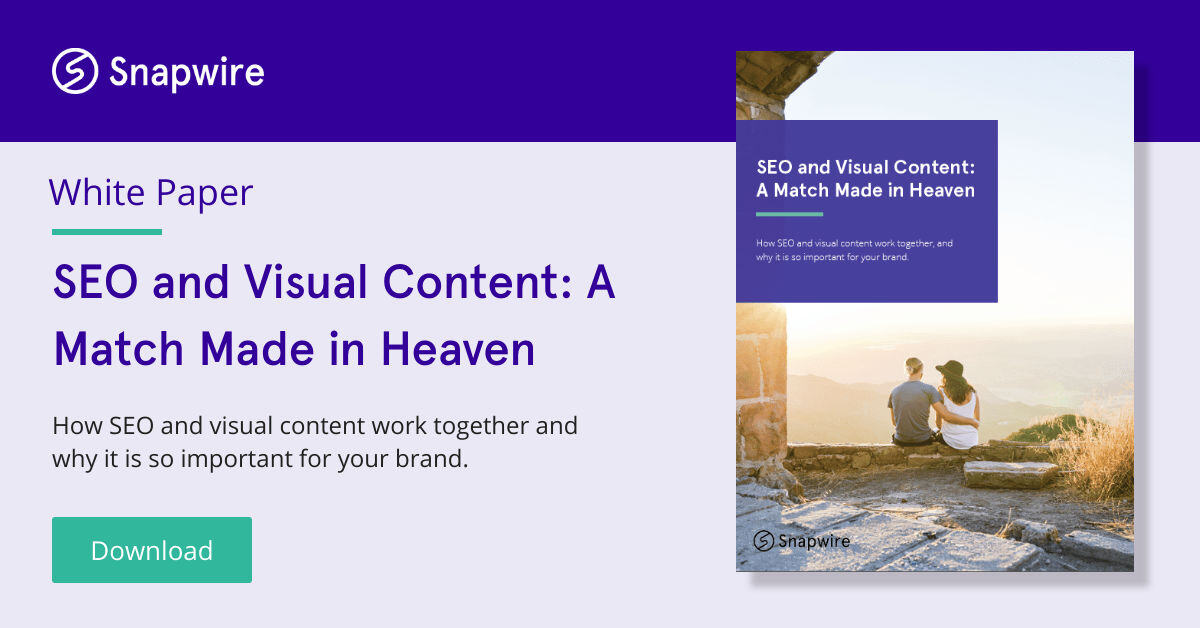Virtually everyone involved in web development has an understanding of SEO. Speak to a web developer, marketer, or content strategist. Each one will (or should be able to) tell you about the importance search engine optimization holds as a component of a brand’s overall marketing strategy. Yes, everyone appreciates how critically important SEO is, so why isn’t everyone maximizing its power? Well, some believe it’s all about the visual content featured on a site and not traditional SEO. Really? Both are critically important, so it’s necessary to do both. How does a company maximize written content and data for SEO while also leveraging visual content for the same thing? The first step is to truly understand today’s SEO and exactly what it does.

What is today’s SEO?
SEO is not a stagnant practice. On the contrary, SEO evolves. Today’s search engine optimization is more than the use of keywords or phrases. It involves leveraging every form of content to maximize exposure so that Google won’t have a choice but to push your rankings higher than your competitors.
There are four primary pillars associated with today’s SEO: technical SEO, content and user experience, on-site SEO, and off-site SEO.
Technical SEO
Search engines must be able to read your site in order to crawl it properly. The cleaner your site regarding layout, navigation, content presentment, and metadata, the easier it is for search engines to crawl and index your site.
Content and User Experience
Great content leads to a great user experience for your visitors. Using photographs, videos, infographics, and other visual assets that quickly and emotionally convey your message go a long way in increasing your site’s SEO effectiveness.
On-site SEO
Incorporating structured data that provides search engines with information about your site’s content is critically important. Not every website does this, which is unfortunate since everyone involved in developing the content on a website should also strive to include clear and descriptive page titles as well as metadata on each page. Also, a great user experience (UX) and purposeful CTAs contribute to higher rankings on search engines.
Off-site SEO
Developing a website that establishes authority and trustworthiness based on how many external links are associated with it is old school, but it also works extremely well with strong visual content. Establishing a link building strategy regarding written and visual content will do wonders for your site’s performance in search engine rankings. This includes social media links, as well.

Leveraging SEO and visual content
Ensuring that your SEO and visual content efforts work well together can really take advantage of how search engines position your site. But it doesn’t end there. It also takes advantage of how site visitors digest information. Because there are currently more than 1.8 billion websites available today, brands must do everything they can to cut through the clutter and make a lasting impression. Add in the fact that 50% of website visitors determine within 8 seconds whether or not they will continue navigating your site, heightens the competition for attention. Marrying the power of SEO and visual content will allow marketers to carve out real estate in prospect’s minds.
Saying SEO and visual content work well together is one thing, but how do marketers do it properly? Leveraging the power of a visual production platform can help marketers streamline the entire process of developing stunning visual assets without the headaches associated with traditional asset production.
While it’s true that stock photography and video has played a significant role in democratizing the use of visual assets, there is still the need to incorporate specific imagery as a component of content strategy that requires the deepest emotional connection. In other words, it’s great to show a photograph of someone entering a store, but better if that photo shows someone walking into your store and handling your merchandise.
A visual production platform helps marketers collaborate with team members and stakeholders in addition to a network of proven, reliable visual asset producers. Marketers can collaborate on the entire production process, from creative briefs to budget to final delivery, in the most streamlined way possible. This includes incorporating efficiency and reduced costs for content goals, content use, concepts, and final production. It also facilitates centralized access to all visual assets, enabling the ability to search, review, collaborate, and approve the creation of all visual assets for significantly less than traditional visual content production.
This not only works for the creation and use of visual assets for worldwide use where global recognition is important, but it also works at the local level too – conveying authenticity that can only be cultivated by highlighting the intimate details of the well-known establishment around the corner compared to a generic image.

Starting the SEO visual content marriage
Anyone can begin leveraging the power of visual content production. It doesn’t have to cost an arm and a leg to produce the highest quality assets that will drive an emotional connection with your audience. Using a resource such as StudioNow allows marketers and content creators to quickly and efficiently manage the entire production process, including creative brief development, assigning creative resources to the project and quickly receiving the result.
With StudioNow, marketers can facilitate open communication with various stakeholders and providers through a central platform that promotes collaboration through each step of the production process, including:
- Preproduction
- Assigning creators
- Production
- QA and approval
- Delivery
Combining SEO and visual content doesn’t have to be an either/or endeavor. Marketers, content strategists, and website owners can effectively and efficiently do both for maximum SEO effectiveness.
 Visual Production Platform
Visual Production Platform






